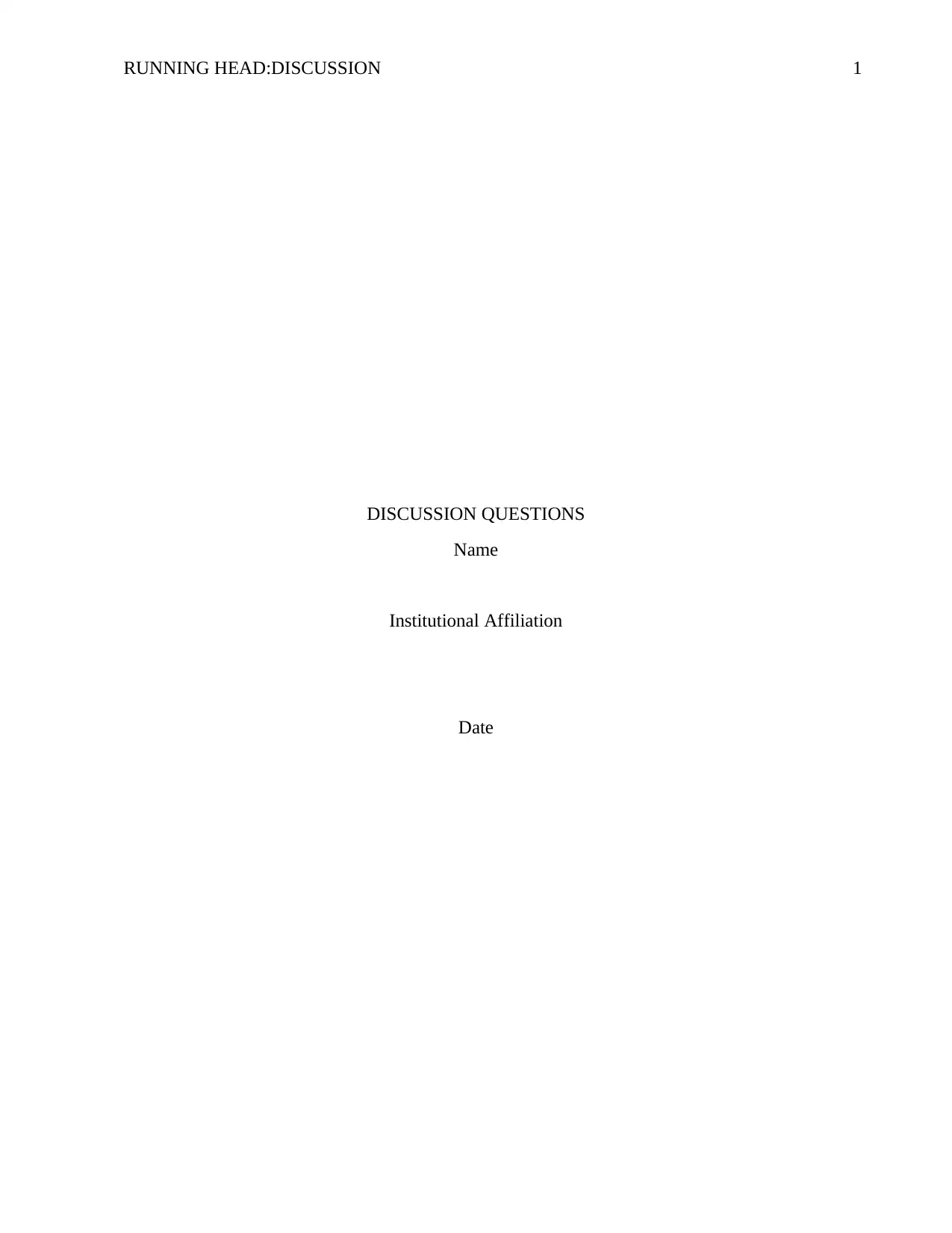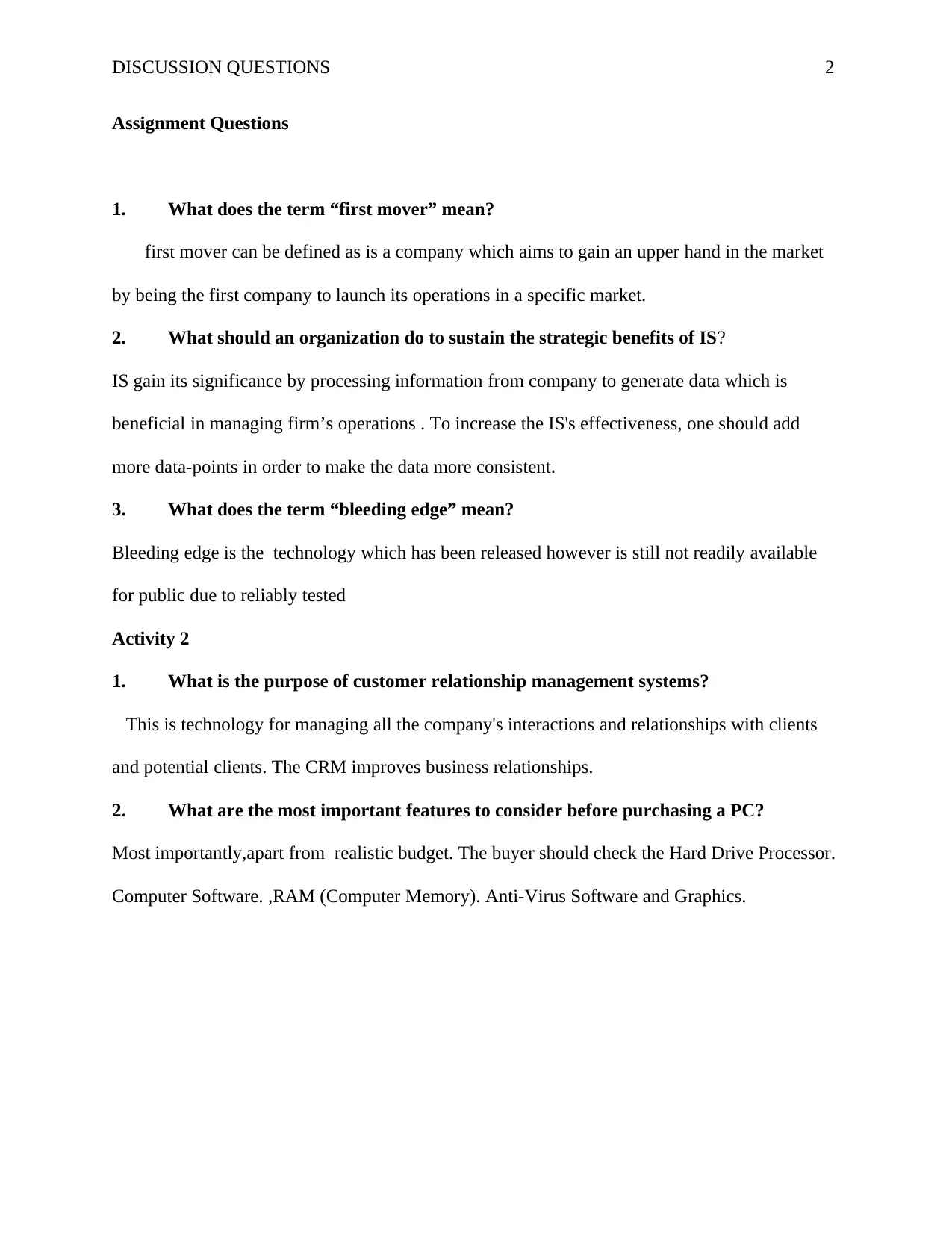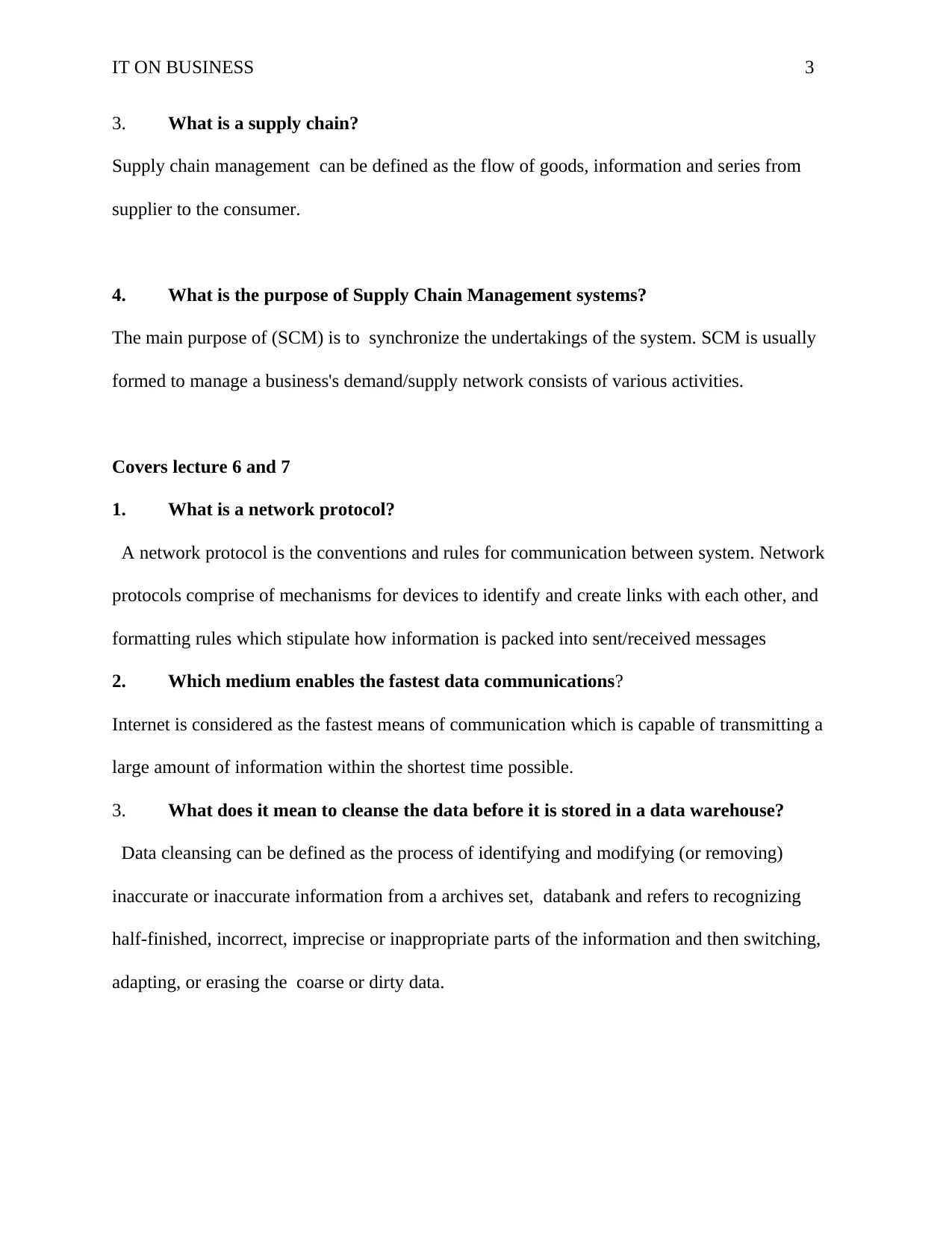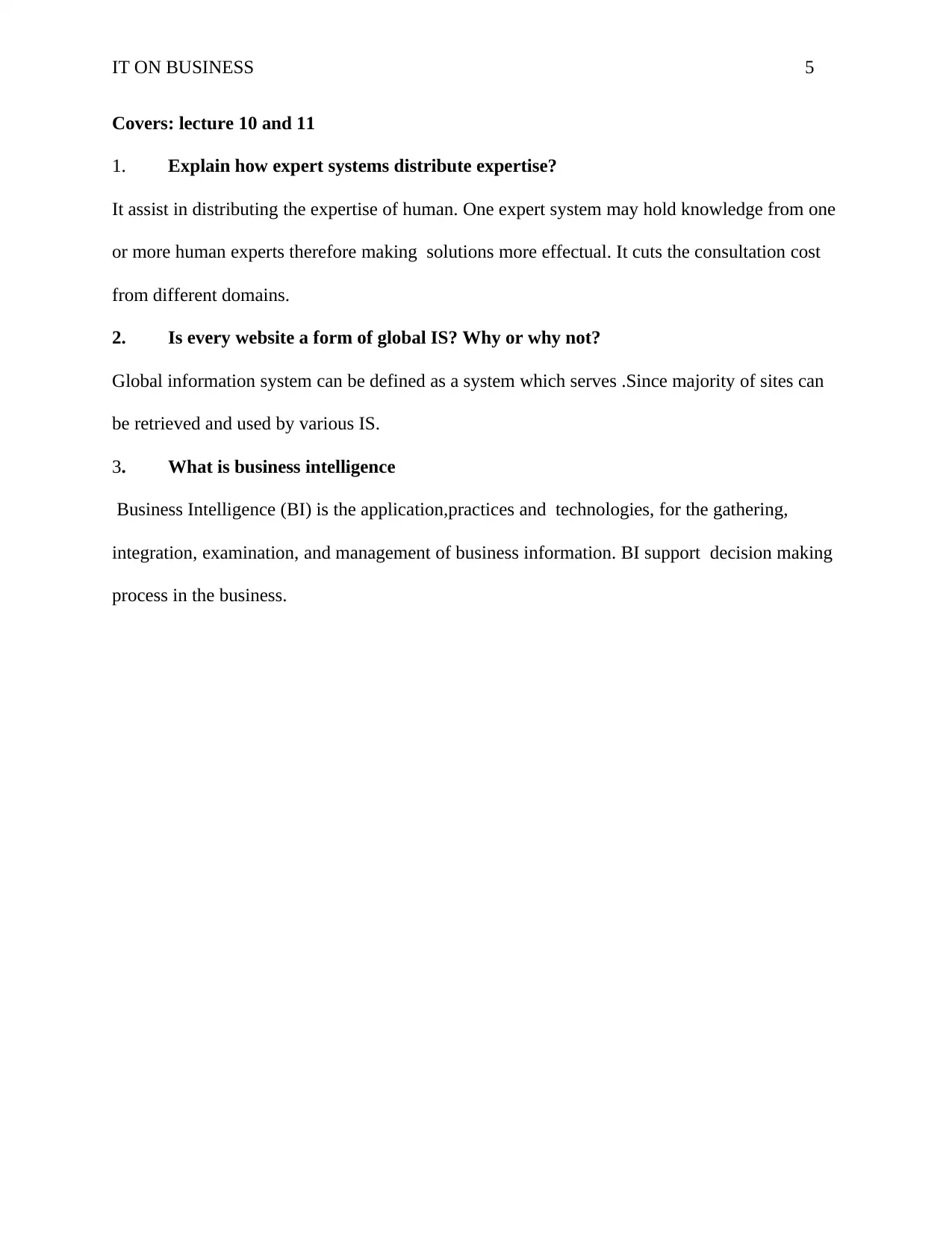Holmes Institute HC1041 Information Technology Discussion Answers
VerifiedAdded on 2022/10/10
|5
|824
|11
Discussion Board Post
AI Summary
This document contains answers to discussion questions from the HC1041 Information Technology for Business course at Holmes Institute, focusing on topics covered in lectures 6-11. The answers address key concepts such as the definition of a 'first mover', strategies for sustaining the benefits of Information Systems (IS), and the meaning of 'bleeding edge' technology. Activity 2 explores Customer Relationship Management (CRM) systems, essential PC features, the definition and purpose of supply chain management, and the purpose of Supply Chain Management systems. The document also covers network protocols, the fastest data communication mediums, and data cleansing in data warehouses. Furthermore, it delves into the advantages and disadvantages of object-oriented databases, the nature of phishing attacks, and the relationship between domain names and IP addresses. Finally, the document explores how expert systems distribute expertise, examines if every website is a form of global IS, and explains the concept of Business Intelligence (BI) and its role in supporting business decision-making processes.
1 out of 5












![[object Object]](/_next/static/media/star-bottom.7253800d.svg)